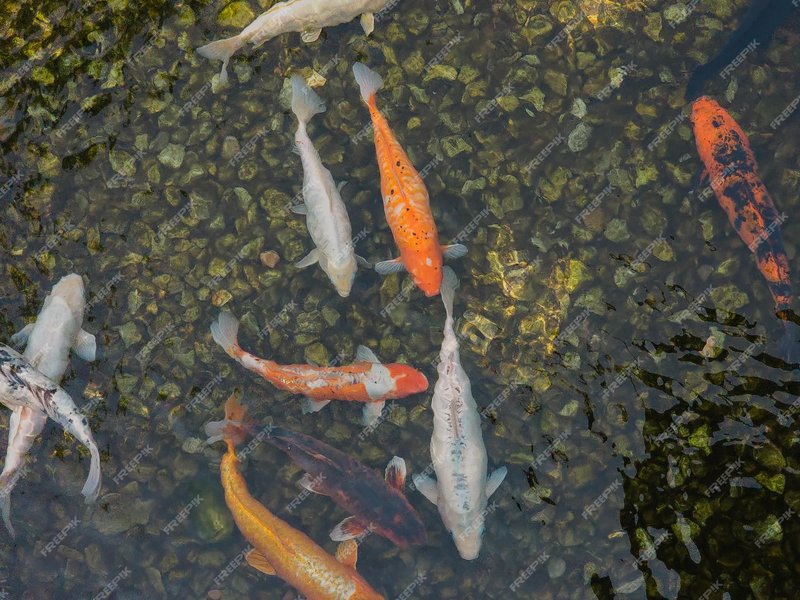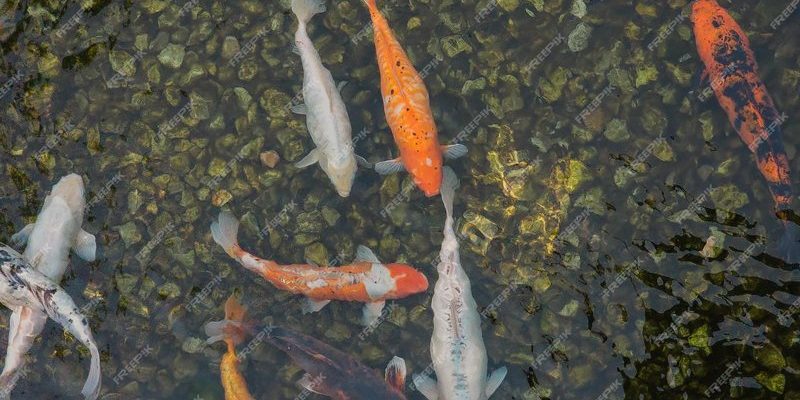
Imagine your pond as a vibrant community. Just like people, different fish have their own personalities and needs. So, before you decide to add other fish to your koi pond, it’s essential to understand how they might interact. Let’s dive into the world of koi and their potential pond mates.
Understanding Koi Fish
Koi fish are not just pretty faces; they’re quite fascinating. Originating from Japan, these fish can grow quite large—sometimes over three feet! Their striking colors and patterns can create a living piece of art in your backyard. However, they do require special care and attention.
Koi thrive in environments that mimic their natural habitat, which means they need plenty of space, clean water, and a balanced diet. They can be quite social and often enjoy swimming in groups. This social behavior makes them unique compared to many other pond fish, which can be more solitary.
If you’re thinking about mixing koi with other pond fish, you should first consider their size and behavior. Koi can easily outgrow many other fish species and might unintentionally become aggressive, especially during feeding times. Keeping that in mind is crucial to maintaining harmony in your pond community.
Choosing Compatible Fish for Your Koi Pond
So, which fish can hang out with your koi without causing chaos? Here are a few species that can usually coexist peacefully:
- Goldfish – These classic pond fish are often the best choice. They share similar care requirements and can swim alongside koi without much trouble.
- Shubunkins – With their beautiful coloration and calm demeanor, shubunkins make great companions for koi.
- Catfish – These bottom-dwellers can help keep your pond clean by eating leftover food and debris.
- Fancy Goldfish – Varieties like Ranchu or Lionhead can peacefully coexist, given their similar needs and non-aggressive behavior.
You might be wondering, though, what about fish like bettas or guppies? Generally, it’s best to avoid them. They can be too small and timid, making them easy targets for curious koi. On the other hand, larger fish, like some types of cichlids, might bully koi or outcompete them for food.
Potential Issues When Mixing Fish
Even if you’ve chosen compatible species, some challenges may arise. One of the biggest concerns is the size difference. Koi are robust and can be quite boisterous when swimming and feeding. If smaller fish get caught in the koi’s excitement, they might get injured unintentionally.
Another issue is territorial behavior. Koi are generally social, but they might defend their territory, especially when they’re spawning. If you introduce new fish during breeding season, you might see some aggression. It’s wise to plan your fish introductions carefully.
Lastly, water quality becomes paramount when you mix species. Koi produce a lot of waste, so you’ll need to ensure your pond filtration system can handle the load. Poor water conditions can stress out all your fish, leading to illness.
Feeding Considerations
Feeding your koi is both an enjoyable and essential part of keeping them happy. However, if you have other fish in the pond, it’s vital to consider their dietary needs too. Koi are omnivores and will eat just about anything, from pellets to insects, while other fish might have more specific dietary restrictions.
When feeding, you can avoid competition by staggering feeding times. For instance, feed your koi first and allow them some time to enjoy their meal before offering food to the other fish. This helps ensure that everyone gets their fair share without chaos.
Also, be cautious with feeding quantities. Overfeeding can lead to increased waste, which can hurt water quality. Keeping an eye on how much food goes in and how much fish are eating helps maintain a healthy pond environment.
Pond Size and Environment Requirements
The size of your pond plays a crucial role in determining whether koi and other fish can coexist harmoniously. Koi require a minimum depth of about three feet to thrive, as it offers them protection from predators and helps regulate temperature. If your pond is smaller, it might not provide the right environment for mixing fish.
You’ll also want to consider the layout of your pond. Depth variation, hiding spots, and plants can help create a more balanced ecosystem. A well-planned pond can reduce stress among different fish, giving them areas to retreat if needed.
Including aquatic plants can also benefit both koi and their companions. They provide shade, shelter, and even some natural food sources. Just be sure to choose plants that are safe for both koi and other species. Some plants can be toxic or may have roots that could harm fish.
Monitoring Fish Behavior in Mixed Ponds
Once you’ve introduced new fish to your koi pond, keep an eye on their interactions. Fish behavior can give you clues about how well they’re getting along. Are they swimming together, or are they staying apart? Do you notice any signs of aggression?
If you see any aggressive behavior, like nipping or chasing, you might have to separate the fish. Remember, it’s essential to prioritize the well-being of all your pond residents. Sometimes, even the most compatible fish may not get along due to individual personalities.
Another thing to watch is their eating habits. If one species seems to struggle during feeding, it might mean they’re feeling stressed or bullied. Adjusting feeding times or space can help ease tensions.
Mixing koi with other pond fish can lead to a vibrant and beautiful aquatic community, but it requires careful planning and ongoing observation. By choosing compatible species, monitoring their interactions, and making adjustments as necessary, you can create a peaceful environment for all your fish.
Remember, patience is key in this process. It’s a bit like hosting a dinner party—sometimes it takes a while for everyone to find their groove! With the right approach, you can enjoy the colorful spectacle of koi alongside their fishy friends, creating a thriving ecosystem right in your backyard.

